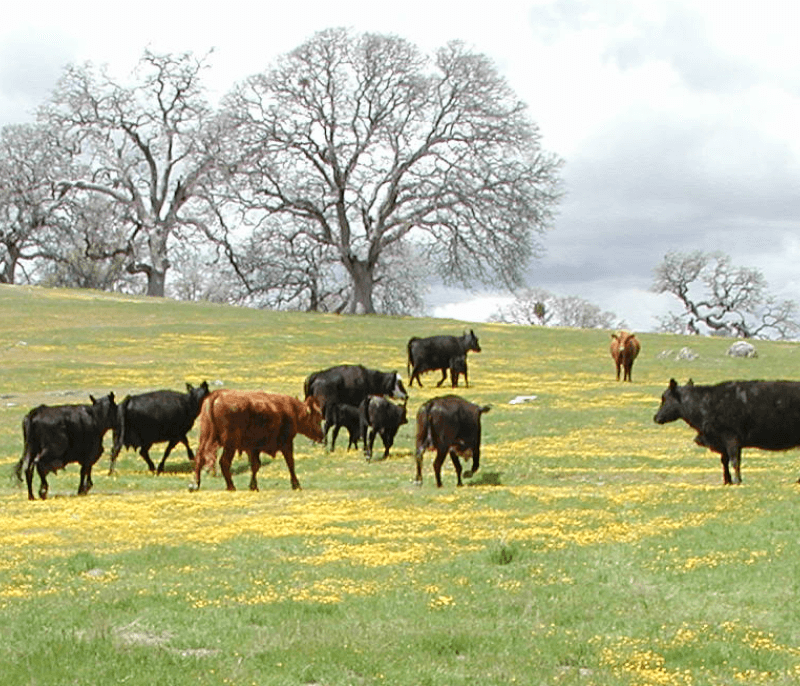Maintains Healthy Grassland Ecosystems
Conservation grazing helps maintain a healthy grassland ecosystem. Without grazing, grassland areas would be replaced by weedy, undesirable plants, and in some cases will become coyote brush dominated scrublands. Conservation grazing also reduces the cover of annual grasses, which allows for new plant growth like wildflowers and native grasses.
Supports Habitat Diversity for Wildlife
Well-managed conservation grazing increases habitat diversity. Many species, including endangered ones, depend on grasslands for their livelihood. California ground squirrels occur widely within grazed grasslands and develop burrow systems. The protected California tiger salamander and the California red-legged frog, along with western burrowing owls, San Joaquin kit fox, and American badgers, all rely on these burrows. Plus, the prey found in grazed areas support the foraging needs of predators like bobcats and golden eagles. Additionally, stock ponds used for livestock watering support critical breeding habitat for native amphibians.
Vital to Wildfire Protection
Grazing cattle play an important role in wildfire protection by reducing flammable vegetation and fire risks. Conservation grazing helps reduce fire hazards by controlling the amount and distribution of grasses and other potential fuel. While cattle grazing helps reduce flammable vegetation in grasslands areas, goats and sheep are used around urban settings, in conjunction with human work crews and prescribed burns, to create fuel breaks – a proactive effort to minimize future wildfires.
Grazing programs have been shown to reduce fire intensity and slow the rate of spread, giving firefighters a fighting chance to combat fires. Conservation grazing also helps prevent grasslands from transitioning into shrublands, which contain more flammable vegetation and higher wildfire risks.


Resources
Foss, Roxanne Hulme. 2016. A Review of Ecological Grazing Management Approaches Applicable to EBRPD Rangelands (PDF)
Barry, Bush, Larson and Ford. 2015. Understanding Working Rangelands: The Benefits of Grazing- Livestock Grazing: A Conservation Tool on California’s Annual Grasslands. University of California, Division of Agriculture and Natural Resources. ANR publication 8517 (PDF)
Barry, Bush, Larson 2015. Understanding Working Rangelands: Cattle, Sheep, Goats and Horses: What’s the Difference for Working Rangelands? University of California, Division of Agriculture and Natural Resources. ANR publication 8524 (PDF)
- Download: Managing Rangelands to Benefit California Red-Legged Frogs & California Tiger Salamanders (PDF)
- Download: Range Ecology Grassland Management and Monitoring options for the East Bay Regional Park District: Final Report 2011 Grassland Monitoring Project (PDF) (Year 10)

